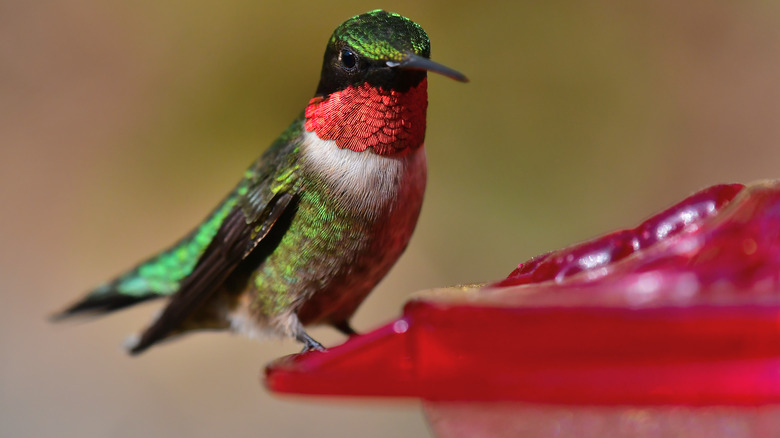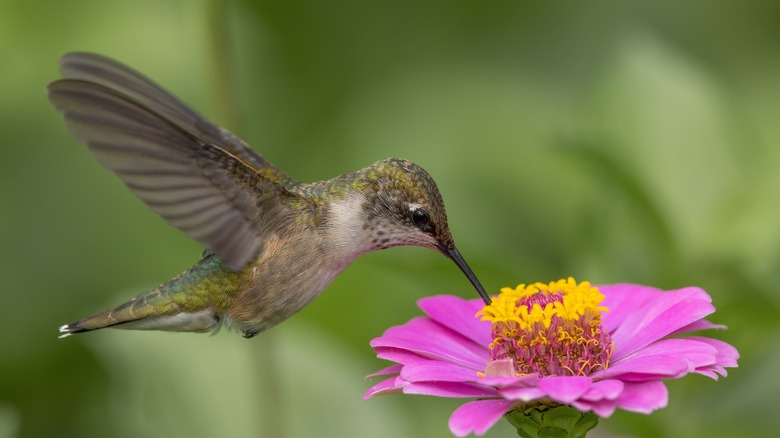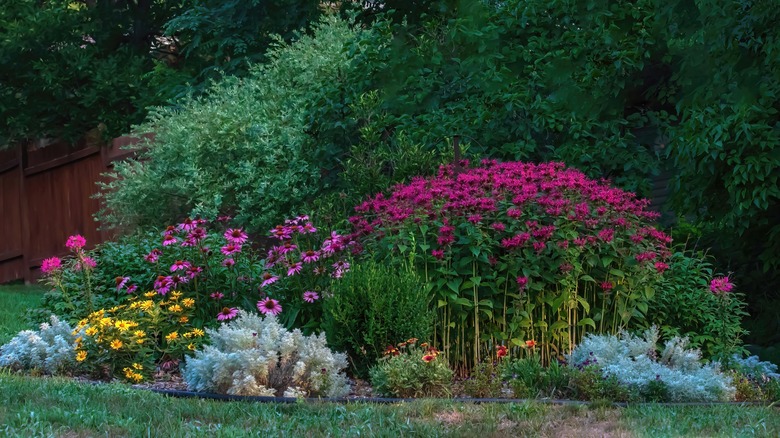The Sweet Garden Flower You Can Use As Hummingbird Bait On Your Feeder
Did you know that hummingbirds visit up to 2,000 flowers a day to get enough nectar? These tiny birds have a voracious appetite and a knack for feeding on all sorts of small, colorful flowers. So, if you want more hummingbirds at your feeder, try using tiny, bright flowers like zinnias to attract them. Zinnias belong to the Asteraceae family and are native to the Southwestern United States, Mexico, and South America. They come in bright colors like red, pink, orange, yellow, and purple. Hummingbirds love them for their vibrant hues and the sweet nectar they provide. Their open, daisy-like structure also makes it easy for hummers to access the nectar. When they spot one on your feeder, they're bound to stop by and feed.
If you don't have zinnias yet for your feeder, no worries. You can get a 12-pack tray at Lowe's for about $14. Growing and caring for your own zinnias is a great idea, too. These flowers are known for their easy care — perfect for beginner and experienced gardeners. They're also hardy and can tolerate a range of soil types and climates. Plus, zinnias have a long blooming season spanning from late spring or early summer to the first frost. This means you will have a long-lasting supply of flowers to use as bait for your feeder. Below, you'll find how to effectively use zinnias to lure hummers, along with other small, colorful flowers you can use as alternatives.
Using zinnias as hummingbird bait
Zinnias make great hummingbird bait, but you need the right flowers and feeder placement. For your choice of blooms, bright red, orange, and pink zinnias will catch hummers' eyes best. Once you have your flower, trim the stem so the zinnia will nestle nicely in the feeder.
When you place the zinnia stem, make sure to leave open ports for the hummers to realize there's homemade hummingbird nectar in your feeder, too. You can also do this by placing the zinnia stem on just one side of the feeding area, keeping the flower head front and center where hummingbirds can easily spot the zinnia's bright colors. Once they do, the birds will check out the feeder and eventually discover the nectar from the multiple ports. Keep your feeder full and watch them come back for more. With each visit, the birds will understand your feeder is a reliable food source they can count on. They might even come back year after year.
Other small, colorful flowers to use as hummingbird bait
Zinnias are an excellent choice to attract hummingbirds to your garden, but you can use other flowers, too. Plants like salvia, bee balm, lantana, and eastern red columbine are also big hits with hummingbirds, thanks to their bright colors and nectar-filled blooms.
Salvia, also known as sage, comes in a range of colors, like red, purple, and blue. Its tube-shaped flowers are perfect for hummingbirds because they make it easy for them to get to the nectar. Bee balm is another great choice with its eye-catching red, pink, and purple flowers. Not to mention, it gives off a sweet scent that hummingbirds can't resist. Lantana, with clusters of small flowers in various shades like yellow, orange, pink, and red, is particularly attractive to hummingbirds, too. Its blooms are a rich source of nectar. Columbine also adds a unique touch to your feeder with its spurred petals and vibrant colors. Whichever one you choose, pairing your feeder with these bright blooms is sure to lure in hummingbirds, and you can enjoy watching them dart around your garden.


